The content of the article
Many people have encountered ordinary snakes in their lives, but not everyone knows that there are several varieties of these creeping ones. For example, watermark is its immediate relative. Unlike his relative, he likes warm and wet places. In size, they are almost similar. The largest specimen is fixed at 1.5 meters long. There are other differences. Consider them in more detail.
First of all, the water snake has a completely different color than that of the closest relative. Shields on the head are in a different place. The belly of the water snake has a yellow or red color. The color of the whole body is green or brown. The pattern can be placed in staggered order, and narrow transverse stripes. In some individuals, the spots turn into bands. There are water snakes that do not have any pattern and have a uniform color. Scientists have called these individuals melanists.
Habitat of water snakes
As previously reported, water snakes are heat-loving creatures, so you can only meet them in the southern, eastern and central parts of Europe. They are not adapted to the northern temperature. Water snakes can be found in the Caucasus, China, India and other Asian countries. In Russia, they are found in the Volga and Ciscaucasia.
Water snakes spend most of their lives near reservoirs, so finding them elsewhere is a real rarity. They live on the banks of rivers, lakes, ponds and even some seas. In addition to them, they are also found in artificial waters and reservoirs. Water snakes love warm settled reservoirs where there is no sewage. In addition, snakes can live and cool channels, which are located in the mountains at a distance of 3 kilometers.
Water snakes prefer to search for food in water, so they do not like polluted water. In transparent waters, it is convenient to track the victim. Any places to spend are stones and branches that grow above water. Water snakes are great swim, not only on the surface, but also depth. They can travel great distances, even against the current.In addition, snakes well overcome vegetation, and also creep on trees and shrubs, located next to the pond.
Snake lifestyle
At nightfall they are passive. In warm weather, they tend to be on the surface to warm up. Then go hunting, plunging into the pond. After eating, they climb up branches or stones again and digest the food. They do not tolerate high temperatures, so they crawl into water or vegetation. With the onset of cold weather, the snakes hibernate. They are located in deep pits on the banks or in the mink of other animals. Wintering can be carried out individually or in groups. Scientists have discovered a cluster of more than 200 snakes of different ages and genders. In such places they winter every year.
How does reproduction occur?
The period of reproduction begins with the connection of snakes in certain groups, where the intercourse occurs. Water snakes creep out after wintering in the spring when it is warm enough outside. Marital behavior is no different from their closest relatives. After fertilization, the female bears cubs until the end of June, and then lays eggs. One snake can lay up to 15 eggs. Laying is carried out in loose soil, which is reliably protected by stones. Many scientists have observed a collective postponement. In such places there can be more than 1000 eggs.
Cubs grow for 30 days. After hatching, they are able to hunt and eat tadpoles. Sexual maturity is achieved by reaching 3 years.
Some water snakes can breed on colder days. In this case, they move away from the water. Snakes hatch in the summer. Marketers already have a lot of detractors. Like their closest relatives, they want to feast on birds of prey or large fish.
What is included in the diet of water snakes?
Most watery snakes eat small fish, which swims not only in fresh, but also in salt water. During one hunt, a snake can eat more than 40 small fish.They also bite and large fish, whose length reaches 15 centimeters.
To hunt water snakes can in two ways. The first is that the snake first tracks the prey and then quickly attacks it. In case of failure, she leads an active pursuit. Another technique: creeping in case of an unsuccessful attack, do not lead the pursuit, but switch to another victim.
Water snakes can not choke, so send your bite in the middle of the body. Small snake fish swallow immediately, but with larger ones the situation is more complicated. To eat it, it needs hard terrain. Already reliably fixes the fish in the mouth, rises above the water and pulls it to the shore. Eating fish begins with the head.
It is not able to eat large prey of water, therefore, having pulled it onto dry land, it simply throws it. At this power is not limited. He gladly feeds on small rodents, frogs, toads and birds.
Eating a large number of fish, water already causes enormous damage to the fishing industry, so there is an active struggle against these creeping ones. If the snake feels danger, it digs into the soil, or sinks to the bottom of the reservoir.
If you take a water snake, it releases an unpleasant liquid, like its closest relative.
Conclusion
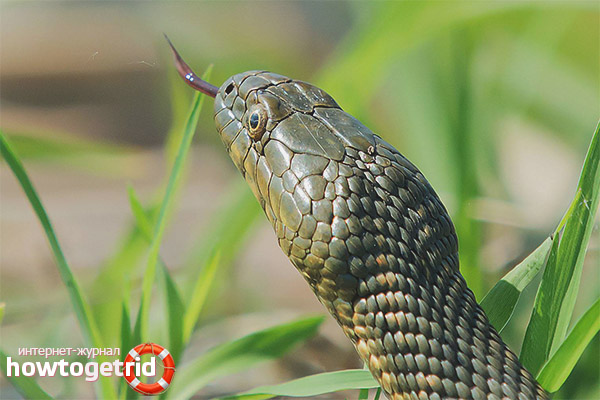
Water snakes are one of the relatives of ordinary snakes. They are not poisonous at all, so if you are bitten by a person, there is no danger. This snake is easy to recognize by its characteristic color. The belly has a red or yellow color, the pattern on the back can be either staggered or in the form of longitudinal and transverse stripes.
Most of the life of the snake spend near the reservoirs, located on the stones and branches of trees. In food they prefer small fish, rodents and mammals. The mating period begins after wintering. One female is able to lay up to 25 eggs. Cubs develop over two months, and then hatch.Small snakes can hunt small fish.
As noted earlier, water snakes are harmful to fisheries. Therefore, in their habitats is actively destroyed.
Video: Watermark (Natrix tessellata)


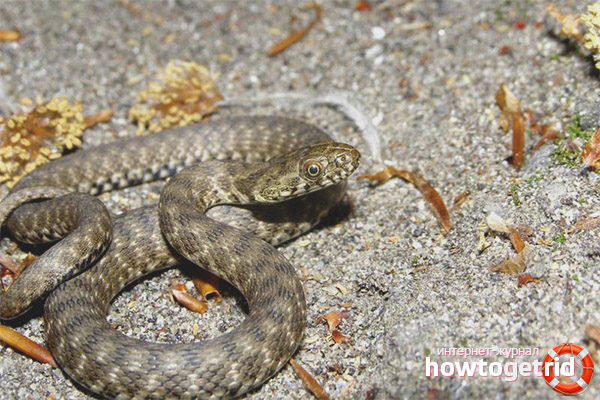

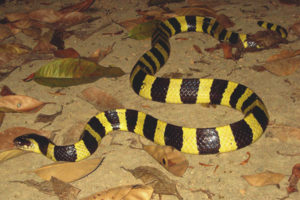

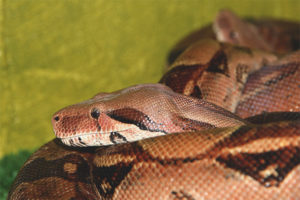
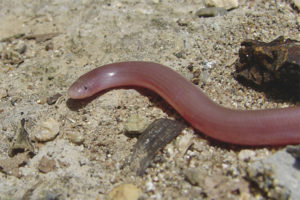

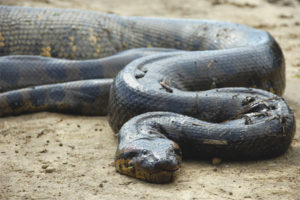

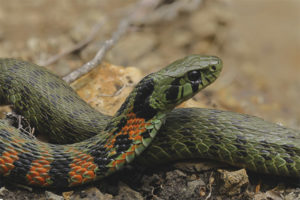
To send